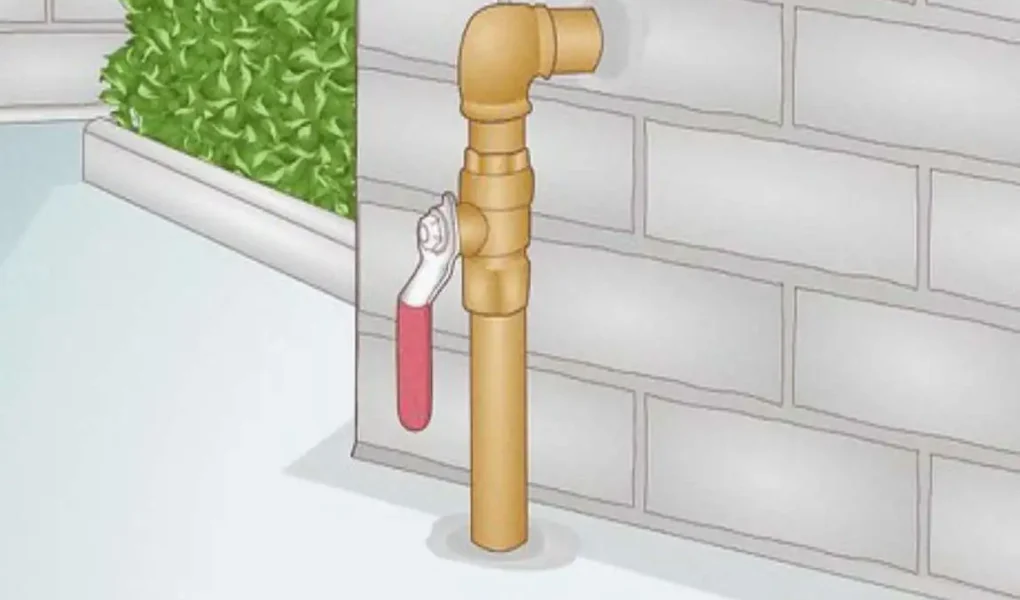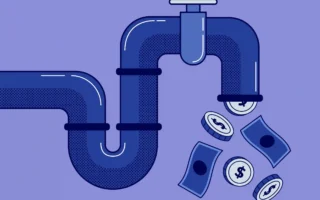In a house plumbing system, many components work together to bring water into your home and carry waste away. One of the most essential elements in this system is the shut-off valve. These valves allow you to control water flow in emergencies or during repairs. Among these valves, there’s one that stands out as a critical component: the curb stop.
So, what is a curb stop in house plumbing? Let’s dive in and explore this essential part of your home’s plumbing system.
What Is a Curb Stop in House Plumbing?

Definition of a Curb Stop
A curb stop is a type of shut-off valve that is typically located near the property line or curb of your home. It’s designed to control the flow of water from the municipal water supply to your house.
Its Role and Purpose Within the Plumbing System
The primary role of a curb stop is to act as a main shut-off valve for your home’s water supply. Turning off the curb stop stops the water flow to your entire house. This is crucial in emergency situations, such as when you need to quickly stop a leak or burst pipe.
Distinguishing Curb Stop from Other Stop Valves
While a curb stop is a type of shut-off valve, it’s essential to understand how it differs from other valves, such as gate valves and ball valves, unlike these valves, which are often found inside the house and control the flow of water within your plumbing system, a curb stop is located outside and controls the flow of water from the street to your home.
Locations Where Curb Stops Are Commonly Found
As mentioned earlier, curb stops are typically located near the property line or curb of your home. They are usually buried underground and may be covered by a metal or plastic lid for easy access.
How Does a Curb Stop Work?
Explanation of Its Mechanism
A curb stop works by using a valve to control pipes water flow. When the valve is open, water can flow freely from the street to your home. When the valve is closed, water flow stops.
How Turning the Curb Stop Controls Water Flow
To turn off the curb stop, you’ll need a special tool, such as a curb key or a wrench. Insert the tool into the valve and turn it clockwise to close it and stop the water flow. To turn the water back on, turn the valve counterclockwise.
Materials Commonly Used for Curb Stops
Curb stops are typically made from durable materials like brass, bronze, or plastic. These materials are chosen for their ability to withstand the elements and the constant flow of water.
Durability and Maintenance Considerations
Because curb stops are located outside and exposed to the elements, they need to be durable and well-maintained. Regular inspections and maintenance ensure that your curb stop continues to function correctly and lasts for many years.
Importance of a Curb Stop in Residential Plumbing

Role in Emergency Water Shut-Off Situations
As mentioned earlier, one of the most essential roles of a curb stop is to act as a main shut-off valve in emergency situations. If you have a burst pipe or a significant leak, quickly turning off the water supply to your home can help minimize damage and prevent further issues.
Controlling Water Supply During Repairs or Renovations
In addition to emergency situations, a curb stop can also be helpful when you need to turn off the water supply to your home for repairs or renovations. By shutting off the curb stop, you can prevent water from flowing into your home while you work on your home plumbing system.
Preventing Water Damage and Leaks
By having a functional curb stop, you can help prevent water damage and leaks in your home. If you notice a leak or suspect a problem with your plumbing system, you can quickly turn off the water supply to prevent further damage.
Legal and Municipal Requirements Regarding Curb Stops
In some areas, there may be legal or municipal requirements for installing and maintaining curb stops. It’s essential to check with your local authorities to ensure you comply with any regulations or codes.
Types and Designs of Curb Stops
Different Types (Compression, Flange, Push-On)
There are several different types of curb stops available, including compression, flange, and push-on styles. Each type has its own advantages and disadvantages, so it’s essential to choose the right one for your specific needs.
Valve Handle Styles (T-Handle, Key Valve)
Curb stops can also have different valve handle styles, such as T-handles or key valves. These handles make it easier to turn the valve on and off, even when the curb stop is buried underground.
Comparison Table of Curb Stop Types, Pros and Cons
Type of Curb Stop: Pros and Cons
Compression Easy to Install, durable. May leak pipe over time
Flange Strong and reliable. More difficult to Install
Push-On: Quick and easy to Install. May not be as durable
Where Is the Curb Stop Located in a House Plumbing System?
Typical Placement Near Property Boundary or Curb Line
As mentioned earlier, curb stops are typically located near the property line or curb of your home. This placement provides easy access to the valve while remaining close enough to the street to control water flow from the municipal supply.
How to Identify Curb Stops on Your Property
If you’re not sure where your curb stop is, there are a few ways to find it. Look for a metal or plastic lid near the curb or property line, or check your property records or water bill for information about the location of the curb stop.
Relation to Water Meter and Main Shut-Off Valve
The curb stop is typically located between the water meter and the main shut-off valve for your home. The water meter measures the amount of water that flows into your home, while the main shut-off valve controls the flow of water within your plumbing guide.
How to Operate a Curb Stop Safely

Step-by-Step Guide on Turning a Curb Stop On and Off
- Locate the curb stop on your property.
- Remove the lid or cover from the curb stop.
- Insert the curb key or wrench into the valve.
- Turn the valve clockwise to close it and stop the water flow.
- To turn the water back on, turn the valve counterclockwise.
Tools Required (Curb Key, Wrench, Etc.)
To operate a curb stop, you’ll need a special tool called a curb key or a wrench. These tools are house design to fit into the valve and make it easier to turn the curb stop on and off.
Common Mistakes to Avoid
When operating a curb stop, it’s essential to avoid common mistakes, such as turning the valve too quickly or using the wrong tool. These mistakes can damage the valve or cause it to leak.
When to Call a Professional Plumber
If you’re not comfortable operating the curb stop yourself, or if you notice any issues with the valve, it’s best to call a professional home plumber for assistance. They can help you safely turn the curb stop on and off and make any necessary repairs.
Signs That Your Curb Stop Needs Repair or Replacement
Indications of a Faulty Curb Stop
There are several signs that your curb stop may need repair or replacement, including:
- Leaks or drips around the valve
- Difficulty turning the valve on and off
- Rust or corrosion on the valve or handle
- Low water pressure in your modern home
Consequences of Ignoring Curb Stop Issues
If you ignore issues with your curb stop, you could face serious consequences like water damage, leaks, or even a burst pipe. It’s essential to address any problems with your curb stop as soon as possible to prevent further damage.
Typical Lifespan and Durability Factors
The typical lifespan of a curb stop can vary depending on factors such as the material it’s made of and its maintenance. With proper care and home maintenance, a curb stop can last for many years.
How to Maintain and Inspect Your Curb Stop
Routine Maintenance Tips
To keep your curb stop in good working order, it’s essential to perform routine maintenance tasks like:
- Cleaning the valve and handle
- Lubricating the valve to prevent sticking
- Checking for leaks or drips
- Turning the valve on and off periodically to keep it from seizing
Seasonal Checks and Inspections
It’s also a good idea to perform seasonal checks and inspections on your curb stop. In the spring and fall, take a few minutes to check the valve for any signs of damage or wear.
Cleaning and Lubricating the Valve
To clean and lubricate your curb stop valve, remove any debris or dirt from the valve and handle, then apply a small amount of lubricant to the moving parts. This will help keep the valve operating smoothly.
When to Schedule a Professional Inspection
If you notice any issues with your curb stop, or if it’s been a while since your last professional inspection, it’s a good idea to schedule a visit from a plumbing tips. They can thoroughly inspect the valve and make any necessary repairs or replacements.
Typical Problems Associated with Curb Stops
Rust and Corrosion
One of the most common plumbing problems with curb stops is rust and corrosion. Because these valves are located outside and exposed to the elements, they can be prone to rust and corrosion over time.
Valve Leaks and Drips
Another common issue with curb stops is valve leaks and drips. If you notice water leaking or dripping from the valve, address the issue promptly to prevent further damage.
Stuck or Seized Curb Stops
If your curb stop is stuck or seized, it can be challenging to turn the valve on and off. This can be caused by rust, corrosion, or lack of use. In some cases, you may need to call a professional plumbing to help free the valve.
Water Pressure Issues Related to Curb Stops
In some cases, issues with your curb stop can affect your home’s water pressure. If you notice low water pressure or inconsistent water flow, it’s a good idea to check your curb stop and ensure it’s functioning correctly.
Cost Considerations for Repairing or Replacing a Curb Stop

Average Costs of Curb Stop Repairs
The average home cost to repair a curb stop can vary depending on factors such as the extent of the damage and the valve’s location. In general, you can expect to pay anywhere from $100 to $500 for a curb stop repair.
Factors Influencing Price (Location, Material, Labor)
Several factors can influence the price of repairing or replacing a curb stop, including:
- The location of the valve (e.g., how easy it is to access)
- The material the valve is made from (e.g., brass, bronze, plastic)
- The cost of labor in your area
DIY vs. Hiring a Plumber
While it may be tempting to try to repair or replace your curb stop yourself, it’s often best to hire a professional plumber. They have the tools, knowledge, and experience to safely and effectively work on your curb stop and help prevent further damage or plumbing issues.




